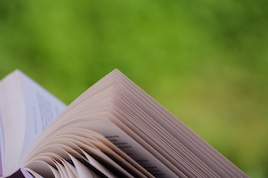Last night, I sat in on an EASI (Equal Access to Softtware and Information) webinar about the accessibility of e-textbook readers by Ken Petri from Ohio State University. It seems as though the device designers are really trying hard to get it right, although there’s still some way to go.
After a short introduction to the legal context (Advocates for the Blind sued Arizona State University over their use of Kindle resulting in Amazon making changes to its software), Ken gave an overview of the current e-book formats on offer, which are mostly based on XML (eXtensible Meta-Language):
- PDF (Portable Document Format) – common, but mostly inaccessible unless tagged correctly.
- MOBI (Adobe).
- AZW (Amazon) – ePub-like format for the Kindle, but lacks its rich structure.
- XPS (XML Paper Specification) – designed to look like the original paper copy; only used by Blio.
- DAISY (Digital Accessible Information System) – accessible standard for digital talking books; not much control over formatting.
- ePub v3 – read by most readers (except Kindle); has a lot of DAISY’s accessibility features; rich formatting control, including video/audio embedding; full support for MathML (although no readers can read it just yet). It’s basically XHTML (eXtensible HyperText Markup Language) with super styling, i.e. CSS3 (Cascading StyleSheets) with SVG (Scalable Vector Graphics) and JavaScript.
He then followed this with an overview of e-book reader accessibility:
- Kindle – has a free accessibility plug-in for PC; uses its own text-to-speech engine, so won’t work with screenreaders; not possible to copy and paste text; the finest grain of movement through the book is sentence by sentence; allows synching of different platforms so notes made using Kindle on the iPad can also be viewed on a PC. (Apparently it’s very easy to bypass the digital rights management and convert both MOBI (Adobe) and AZW (Kindle) formats to ePub and read the book on another device!)
- iBooks 2 (Textbooks) on iPad – proprietary version of ePub v3, although authoring software, iBooks Author, is free; good for embedded graphics; can only be used on the iPad, not on the iPhone/iPod nor any other device; limited textbooks in the iBooks Store; possible to read ePub books using iBooks 2, but the fine-grained reading experience isn’t there; words highlighted as played; full typographic control (e.g. enlargeable text, high contrast, etc).
- Blio – has incremental zoom for focussing on a small section of text and back out again.
- ReadHear – a downloadable app for Mac or PC; uses DAISY; accessible maths equations; words highlighted as played; full typographic control (e.g. enlargeable text, high contrast, etc); rich screen reader access (for DAISY books only).
- NookStudy – cross-referencing; synchronised highlighting for comparison purposes, where several books (or different pages of the same book) can be open at the same time; cut and paste; look-up using Wolfram Alpha.
For further information, see Ken Petri’s e-Book Reader Accessibility and Comparison Matrix (under development).
Although the presentation focussed on the accessibility of readers rather than on the content, some mention was made of authoring tools. For example, Calibre is a free, open-source tool that will convert across formats using RTF (Rich Text Format), e.g. from Word to DAISY (although it doesn’t do MathML). There is also a plugin for creating DAISY books from Word itself.
To sum up the importance of e-textbooks, Ken’s presentation included a quote from Eve Hill, Senior Counsellor to the Assistant Attorney General at the Department of Justice:
“In education, the current transition from print materials to digital materials creates and incredible opportunity for people with print disabilities to finally use the same products as their peers and to gain the same benefits as their peers who do not have disabilities.”
Of course, there are negatives, such as affordability of devices, proprietary formats, limited storage capabilities on some readers, possible short shelf-life as device OS’ (Operating Systems) move on, etc; and authors and publishers still need to be made aware that they need to make the content accessible. However, I think e-textbooks have much to offer everyone, not least the opportunity to present information in an interactive and engaging way in a format that almost everyone can access.
